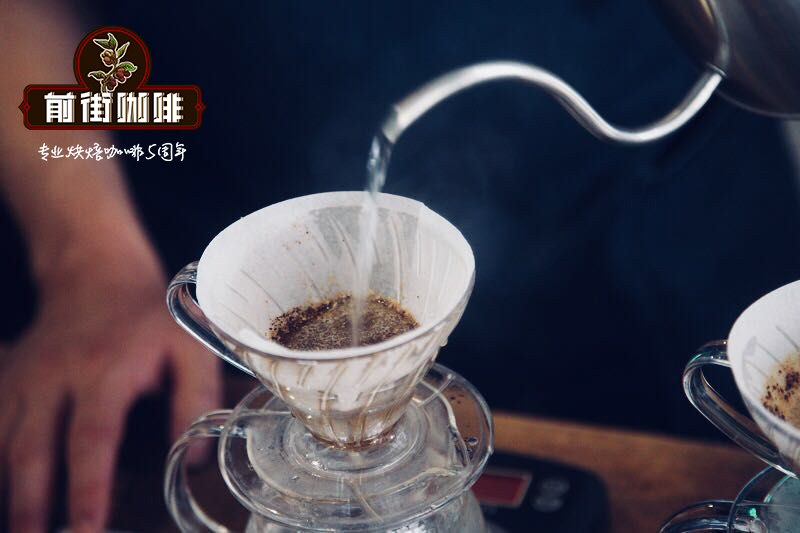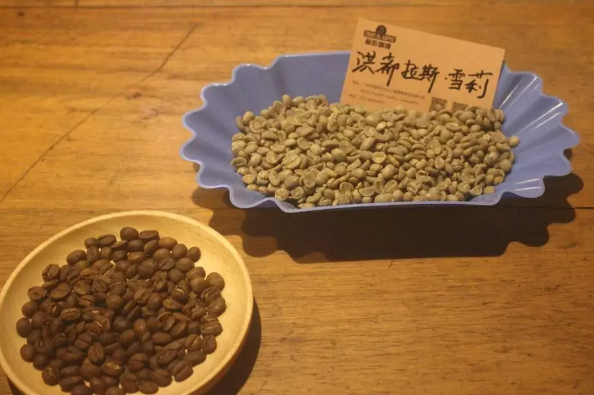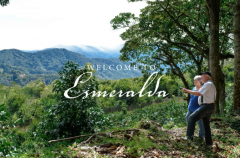How's the Costa Rican coffee? Introduction of Carnett Manor in Costa Rica

In the past, farmers in Costa Rica sold coffee berries to large processing plants, but now they invest in setting up micro-processing plants that use various treatments (sun and honey treatments) to produce small batches of raw beans, which are often heard as "micro batches" and then sold to high-quality international buyers.
Traditional mode of coffee production
In the past, coffee producers in Costa Rica were mainly family farms, covering an area of about 5 to 10 hectares, of which one hectare could produce 1000 kilograms of raw beans, but the coffee berries were sold directly to large wet treatment plants (wet-mill), and large wet treatment plants were made into shell beans, which were treated together with five to six metric tons of beans at a time, resulting in little difference in flavor. That is, the commercial coffee beans we usually drink.
However, at the end of the 20th century, international coffee prices began to collapse, and the price of commercial coffee could not support farmers' costs, causing farmers to suffer heavy losses. as a result, farmers began to rethink other ways out, so micro-processing plants were born.
Micro-processing revolution
The so-called micro-treatment is actually a small amount of coffee berries handled by coffee farmers themselves. Since 2000, Costa Rican farmers have bought dry washing systems, a set of about $25000 to $30, 000, which is a large investment.
As a result, each producing area began to have its own unique flavor of manor coffee beans, and participate in well-known coffee competitions (such as: COE), so that more international third wave of boutique coffee buyers can access the raw beans of these estates. Among them, the Treasure Manor is appreciated by Blue bottle Coffee, which is the best example!
Because of the serious water pollution problem in Costa Rica, most of them are treated by mechanical washing, but the treasure manor only specializes in honey treatment, and it is still black honey treatment, retaining all the sticky pulp layer, which is a high degree of honey treatment! (and try passion honey treatment)
Carnett Manor Canet is located at the highest altitude where Tarrazu Tarazu Coffee is grown in Costa Rica. Carnett is the name of a small farm in this field. Finca Canet is a small 5-hectare estate in the town of San Marcos in Tarrazu, owned by three brothers, the Robles brothers Leo and Elianand Melvin, who have worked together for more than 10 years and share a small water treatment plant (Beneficio).
More than three generations of the Montero family have produced coffee in the charming mountains of Tarrazu, Costa Rica. Today, Carlos and his whole family are involved in the farm in Cane, the name of a small farm called Don Eli. Carlos and his family are deeply involved in Dowie Coffee Farm and miniature mills. With the support of his family, Carlos managed farming and milling. He is in different small farms, but also in the process of picking dates and separation.
The locals choose well-ripe cherries. This area is the most densely planted area of Costa Rican fruit, the main manor is to grow passion fruit, the amount of coffee is quite rare, there is only one specific area to grow coffee, take special care, only pick ripe red cherry fruit. The unique variety in the manor: yellow Catuai.
Important Notice :
前街咖啡 FrontStreet Coffee has moved to new addredd:
FrontStreet Coffee Address: 315,Donghua East Road,GuangZhou
Tel:020 38364473
- Prev

Honduras Masala Guamoca Estate Whisky Sherry Barrel Fermented Coffee Flavor Features
Professional coffee knowledge exchange More coffee bean information Please pay attention to coffee workshop (Weixin Official Accounts cafe_style)[Honduras Shirley] Country: Honduras Production area: Masaguara Manor: Moka Manor Elevation: 1500-1700m Variety: Kadura, Kaduai, Pakas Treatment method: Fine washed whiskey Shirley barrel fermentation/bean information Hondura
- Next

Sun red standard rose summer and water washing red standard rose summer coffee flavor jadeite manor red standard rose summer
Professional coffee knowledge exchange more coffee bean information Please follow the coffee workshop (Wechat official account cafe_style) has entered some of the red mark rosy summers of the Panamanian jadeite estate, namely the washing treatment of the red mark from the Haramillo plot and the sun treatment of the Canas estate. Although we are all red standard Rose Summer, but what is the specific difference? Editor, let's compare ~ L today.
Related
- Does Rose Summer choose Blue, Green or Red? Detailed explanation of Rose Summer Coffee plots and Classification in Panamanian Jade Manor
- What is the difference between the origin, producing area, processing plant, cooperative and manor of coffee beans?
- How fine does the espresso powder fit? how to grind the espresso?
- Sca coffee roasting degree color card coffee roasting degree 8 roasting color values what do you mean?
- The practice of lattes: how to make lattes at home
- Introduction to Indonesian Fine Coffee beans-- Java Coffee producing area of Indonesian Arabica Coffee
- How much will the flavor of light and medium roasted rose summer be expressed? What baking level is rose summer suitable for?
- Introduction to the characteristics of washing, sun-drying or wet-planing coffee commonly used in Mantenin, Indonesia
- Price characteristics of Arabica Coffee Bean Starbucks introduction to Manning Coffee Bean Taste producing area Variety Manor
- What is the authentic Yega flavor? What are the flavor characteristics of the really excellent Yejasuffi coffee beans?

